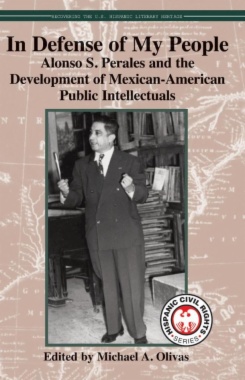Estás filtrando por
Se encontraron 2069 resultados en recursos de contenido
Compartir este contenido
Characterisation of Artemia populations from Colombia for use in aquaculture = Caracterización de poblaciones de Artemia de Colombia para su uso en acuacultura
Copia el enlace o compártelo en redes sociales
Suction and volume changes of Compacted sand-bentonite mixtures = Cambios volumétricos y de succión en muestras compactadas de arena-bentonita
Compartir este contenido
Suction and volume changes of Compacted sand-bentonite mixtures = Cambios volumétricos y de succión en muestras compactadas de arena-bentonita
Copia el enlace o compártelo en redes sociales
A political ecology of Northwest Amazonia: Indigenous ‘Management of the World’ and the Politics of Territorial Ordering in Colombia
Compartir este contenido
A political ecology of Northwest Amazonia: Indigenous ‘Management of the World’ and the Politics of Territorial Ordering in Colombia
Copia el enlace o compártelo en redes sociales
A critical study of the first and second use patents in the Andean Community: the Viagra case = Un estudio crítico de la negación de las patentes de primer y segundo uso en la Comunidad Andina: el caso del Viagra
Compartir este contenido
A critical study of the first and second use patents in the Andean Community: the Viagra case = Un estudio crítico de la negación de las patentes de primer y segundo uso en la Comunidad Andina: el caso del Viagra
Copia el enlace o compártelo en redes sociales
Housing Finance in Colombia: from UPAC to UVR = Financiamiento de vivienda en Colombia: del UPAC a la UVR
Compartir este contenido
Housing Finance in Colombia: from UPAC to UVR = Financiamiento de vivienda en Colombia: del UPAC a la UVR
Copia el enlace o compártelo en redes sociales

In defense of my people : Alonso S. Perales and the development of Mexican-American public intellectuals
Compartir este contenido
In defense of my people : Alonso S. Perales and the development of Mexican-American public intellectuals
Copia el enlace o compártelo en redes sociales
Learning to manage environmental ventures and technological innovation: the case of solar energy = Aprendiendo a gestionar emprendimientos ambientales urbanos y su innovación tecnológica: el caso de sistemas de energía solar
Compartir este contenido
Learning to manage environmental ventures and technological innovation: the case of solar energy = Aprendiendo a gestionar emprendimientos ambientales urbanos y su innovación tecnológica: el caso de sistemas de energía solar
Copia el enlace o compártelo en redes sociales
UMTS Capacity simulation study (carried out at Vodafone Netherlands)
Compartir este contenido
UMTS Capacity simulation study (carried out at Vodafone Netherlands)
Copia el enlace o compártelo en redes sociales

In defense of my people : Alonso S. Perales and the development of Mexican-American public intellectuals
Compartir este contenido
In defense of my people : Alonso S. Perales and the development of Mexican-American public intellectuals
Copia el enlace o compártelo en redes sociales
Soldagem e caracterização das propriedades mecânicas de dutos de aço API 5L-X80 com diferentes arames tubulares = Soldadura y caracterización de las propiedades mecánicas de ductos de acero API 5L-X80 con diferentes alambras tubulares
Compartir este contenido
Soldagem e caracterização das propriedades mecânicas de dutos de aço API 5L-X80 com diferentes arames tubulares = Soldadura y caracterización de las propiedades mecánicas de ductos de acero API 5L-X80 con diferentes alambras tubulares
Copia el enlace o compártelo en redes sociales
Selecciona las Colecciones en las que vas a añadir el contenido
Para consultar los contenidos añadidos busca la opción Tus colecciones en el menú principal o en Mi perfil.
